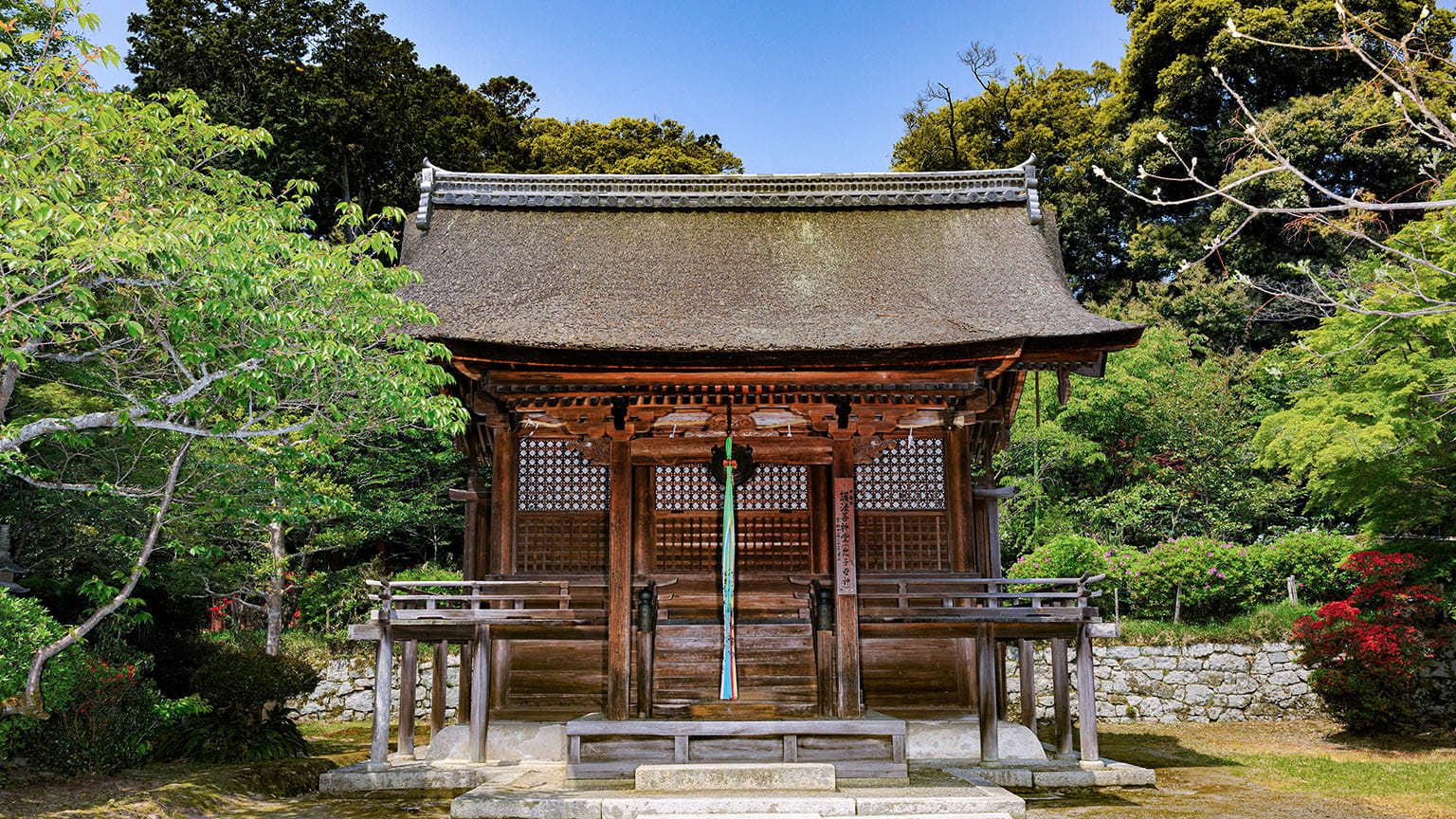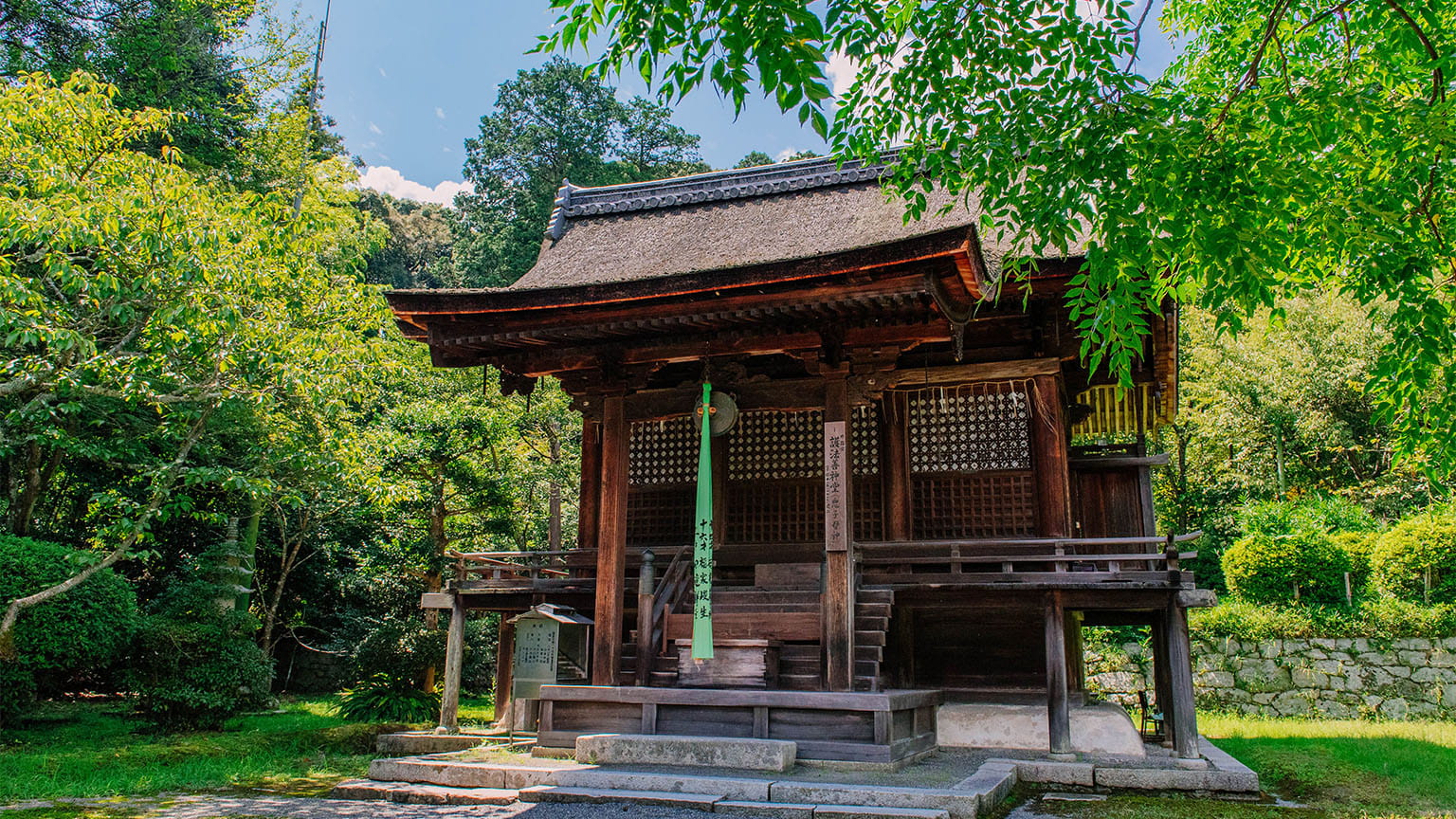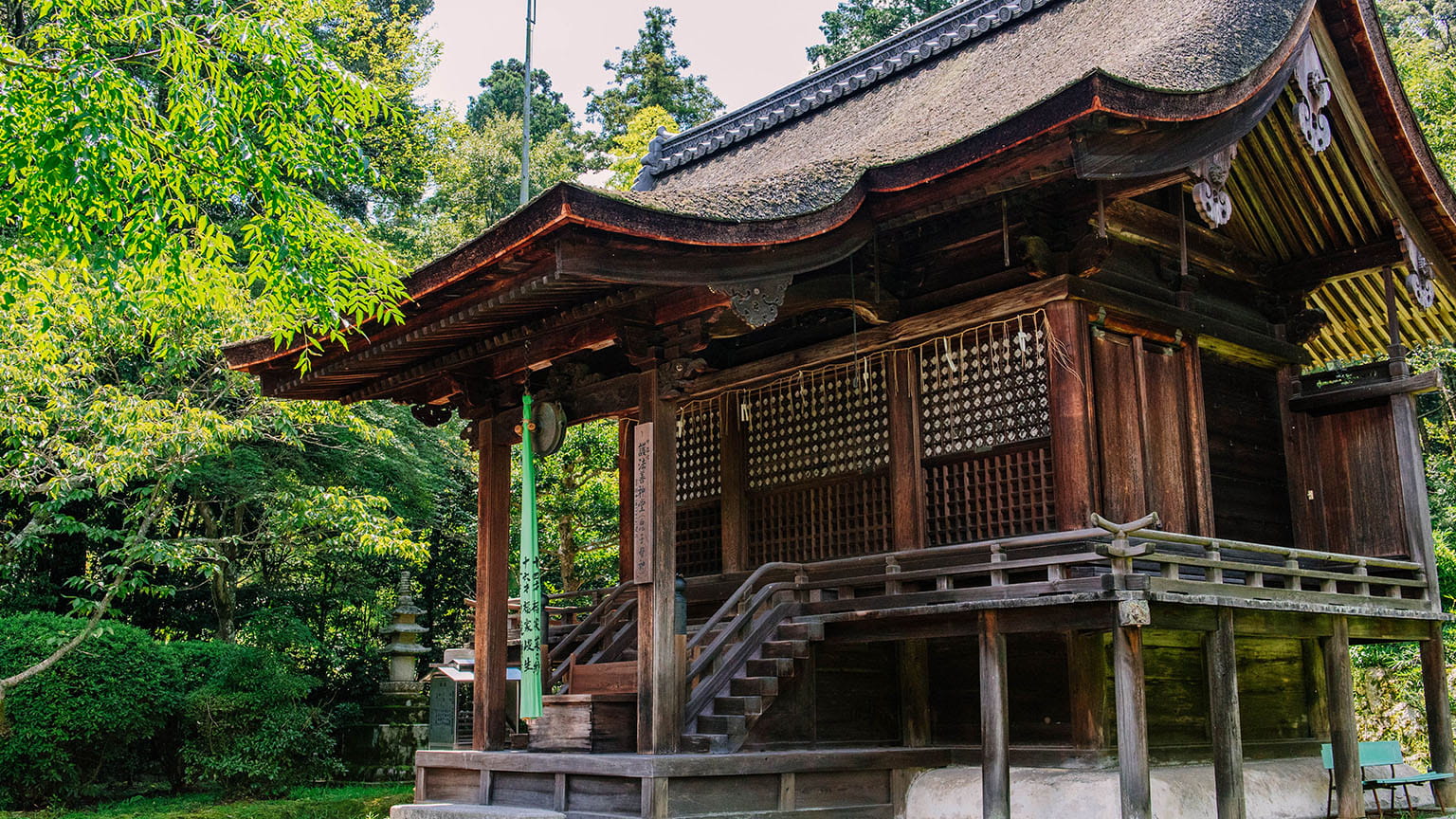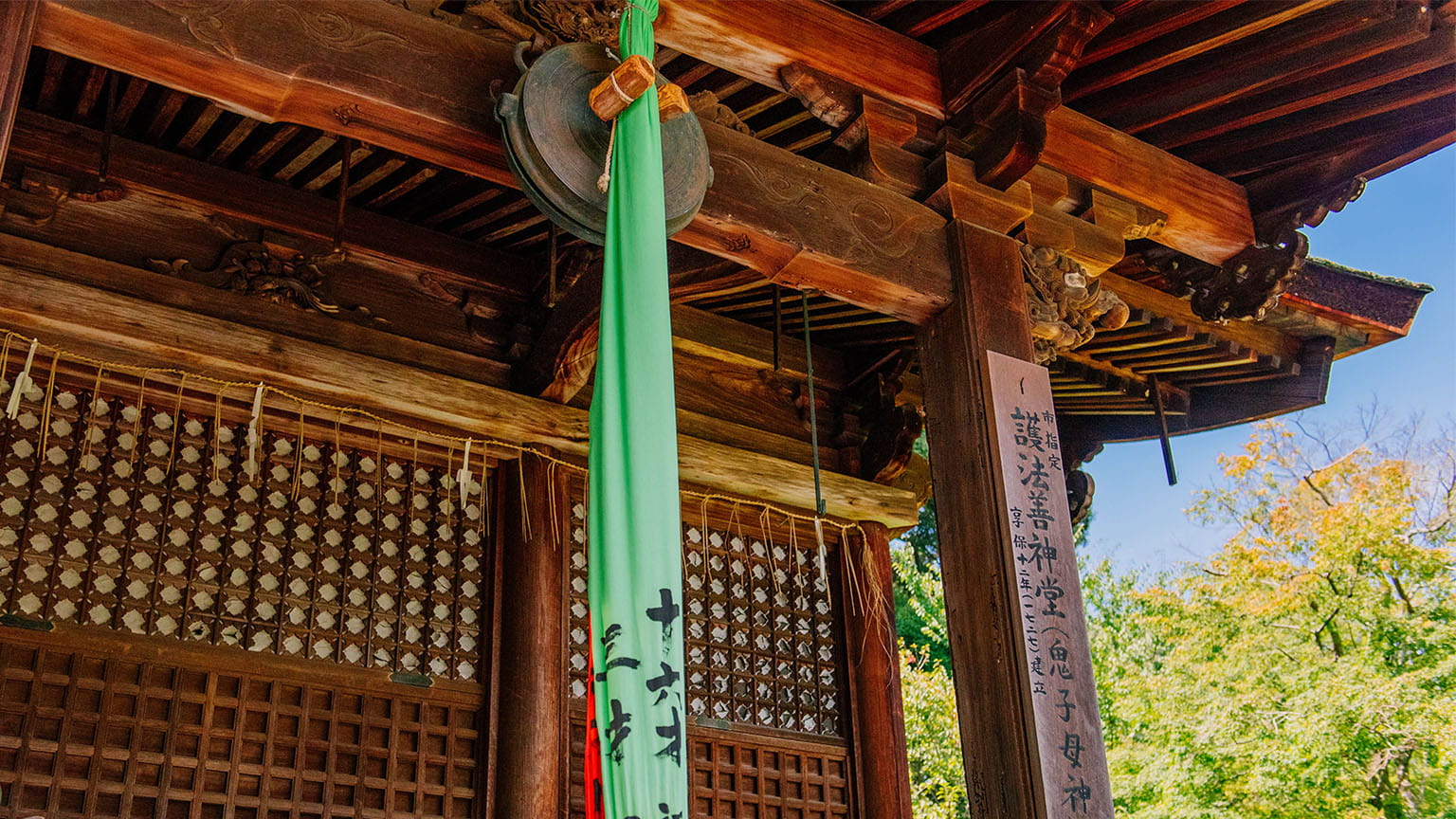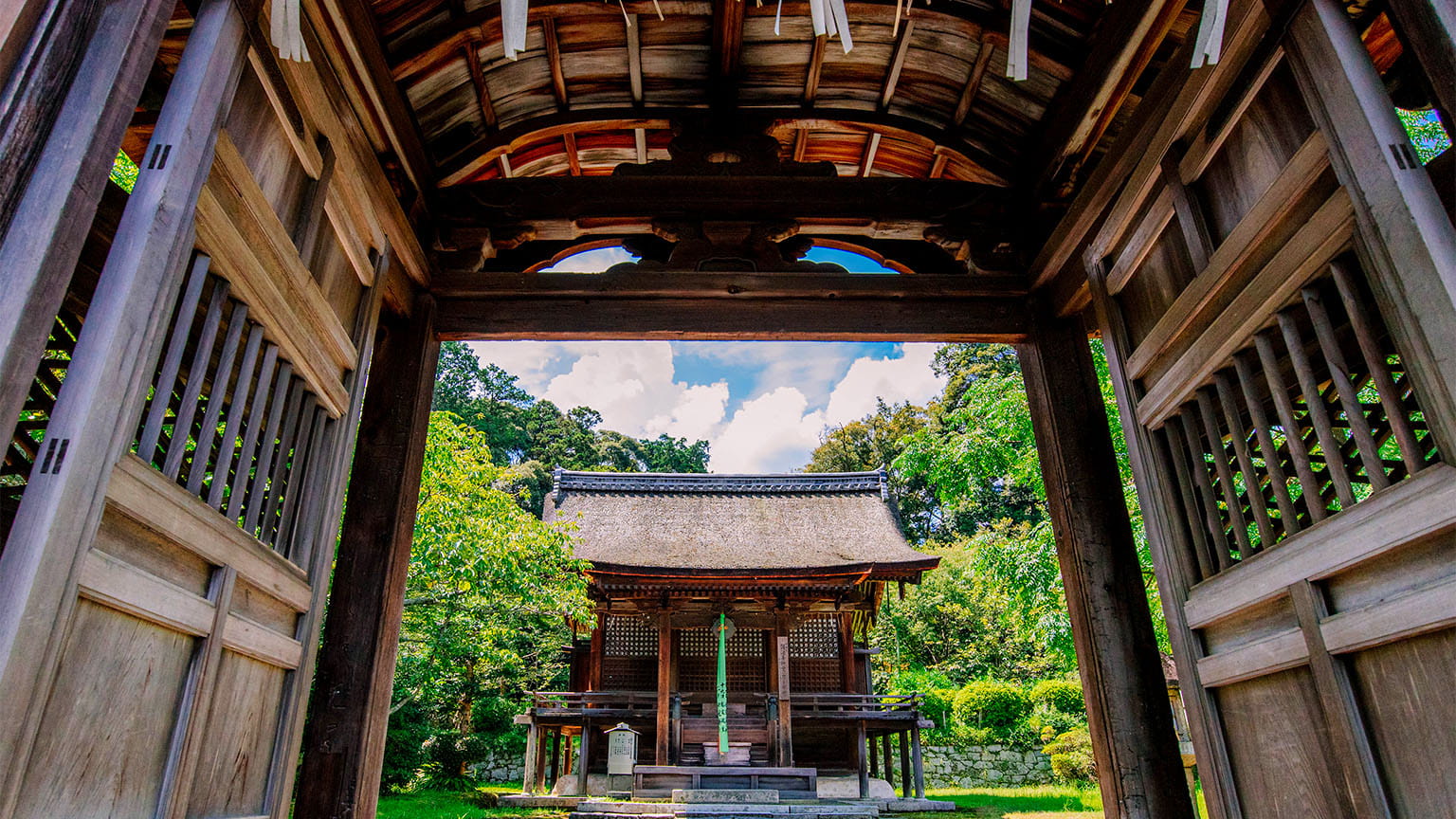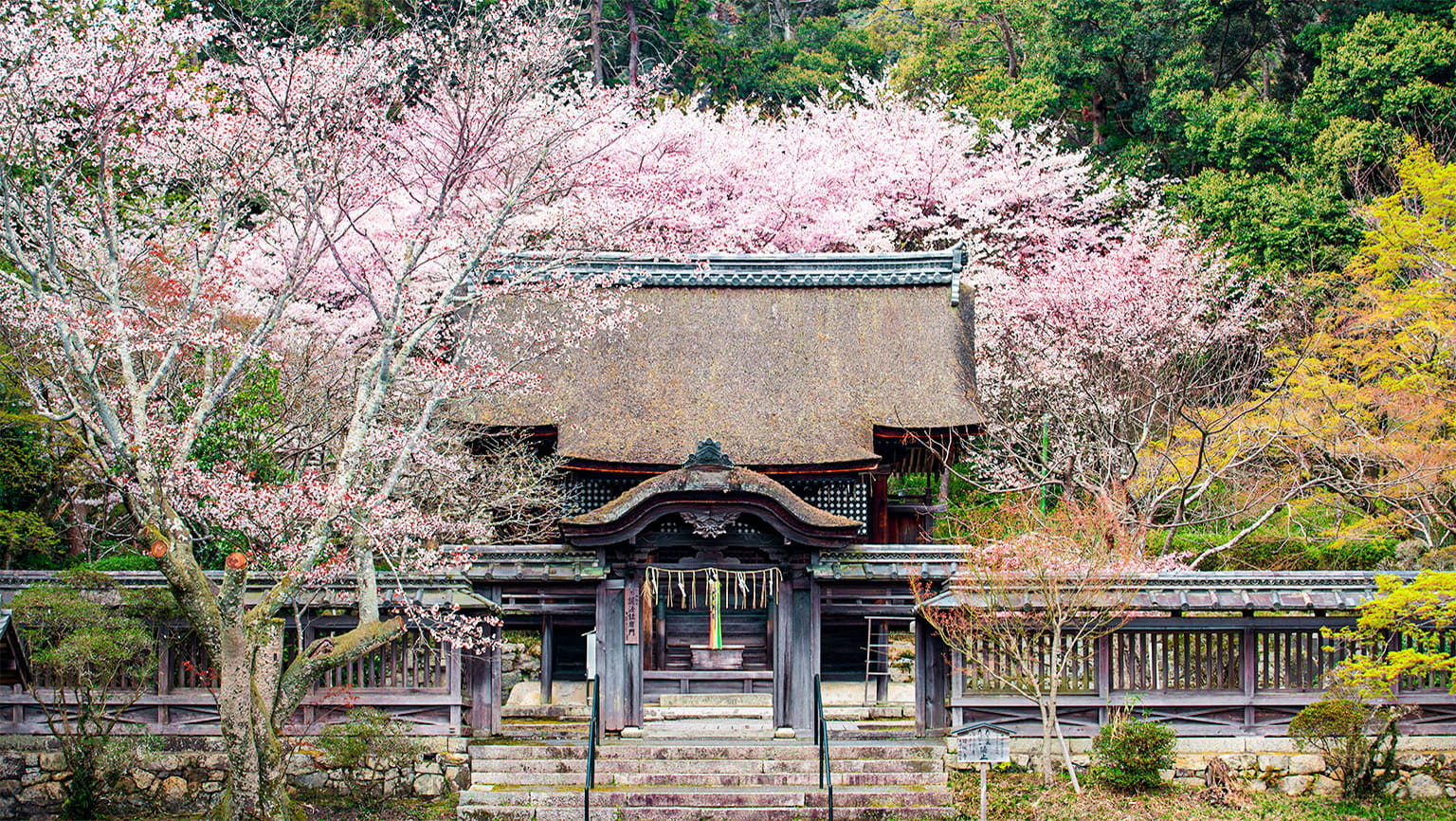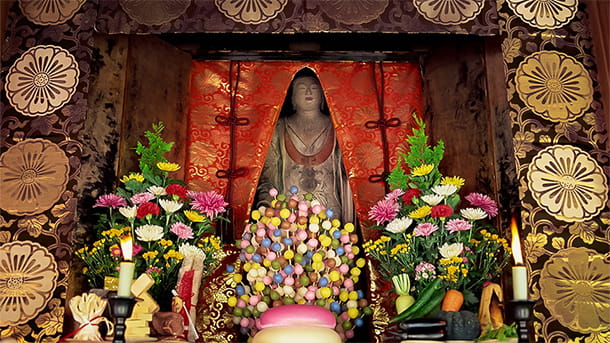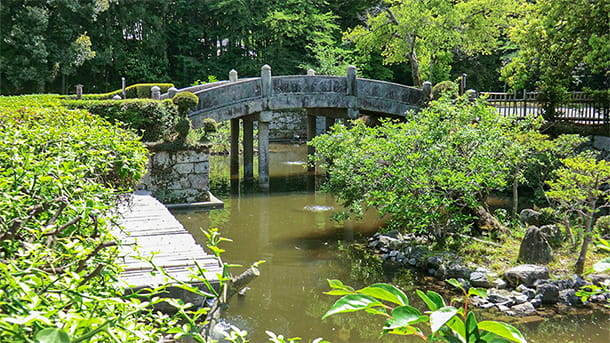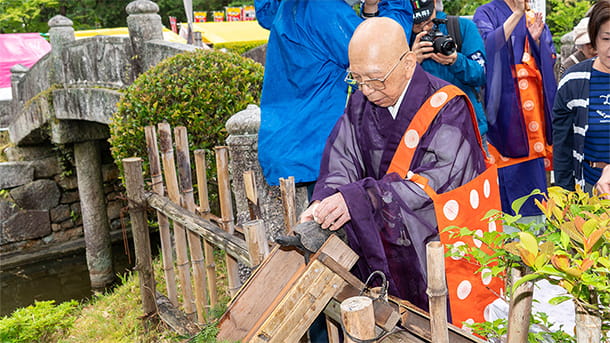Cultural Property of City of Ōtsu
Goho Zenshindo Shrine
READER
Goho Zenshindo shrine is one of the tutelary shrines of Miidera Temple. The current structure was rebuilt in 1727 and enshrines the Goho Zenshin standing statue, a work of Buddhist art that has been designated as an Important Cultural Property.
The Goho Zenshin is equivalent to the deity Kishimojin, also known as Kariteimo. The Sendango Festival was inaugurated to commemorate the rebuilding of the shrine by Ashikaga Takauji in 1363 and continues to the present day. During the festivities, 1,000 sweet rice dumplings (sendango) are offered up to the 1,000 children of Kishimojin. This offering forms part of a ritual prayer for the safe and easy delivery of babies, and for the safety of children more broadly.
During the festival, an event called “Hojo-e” takes place at Hojo Pond, which is located in front of the shrine. Here parents write their children’s names on the shells of turtles and release them into the pond. This festival has been a symbol of the city of Otsu for over 600 years.
- −
- Edo Period
(12th Year of Kyōho Era, 1727)
Please rate this cultural heritage introduction page.
-
-
Satisfaction
-
-
Understanding
-
-
Recommendation
-
-
Attractiveness
-


